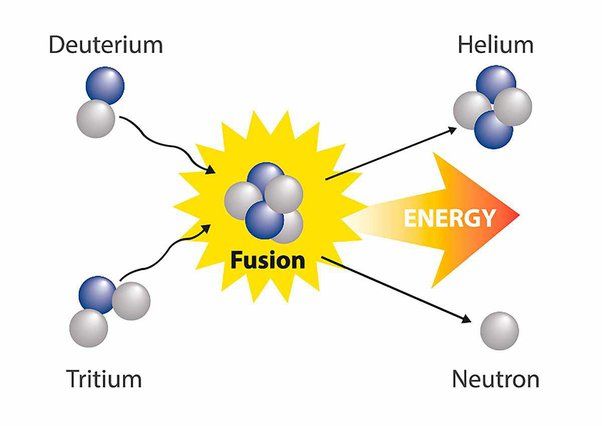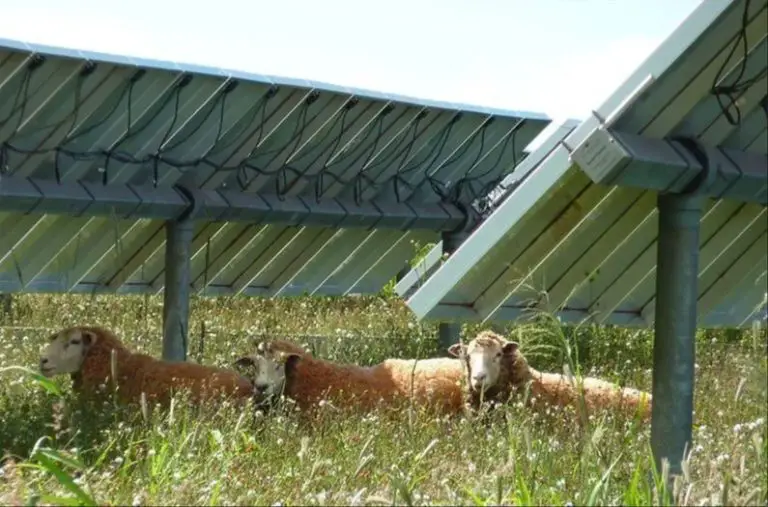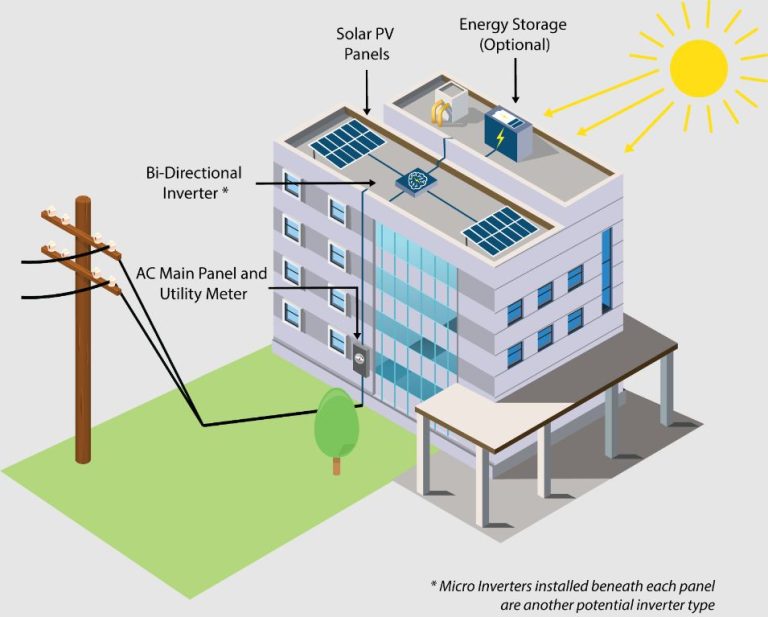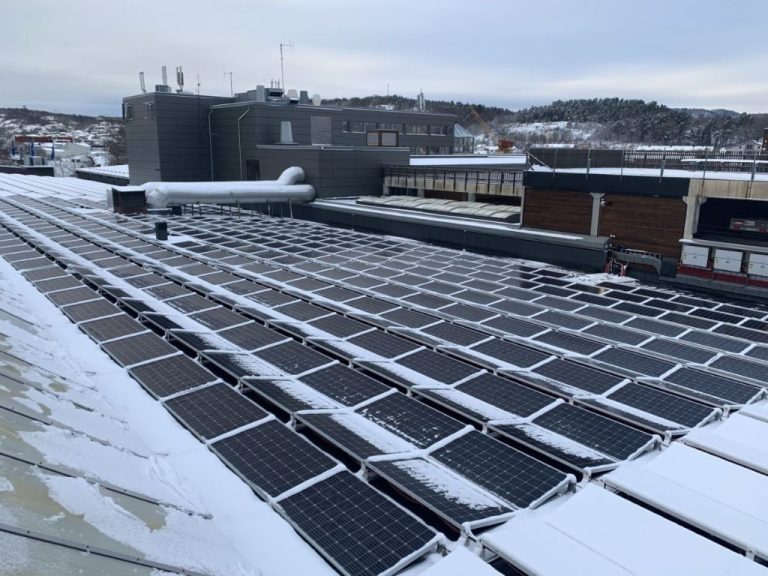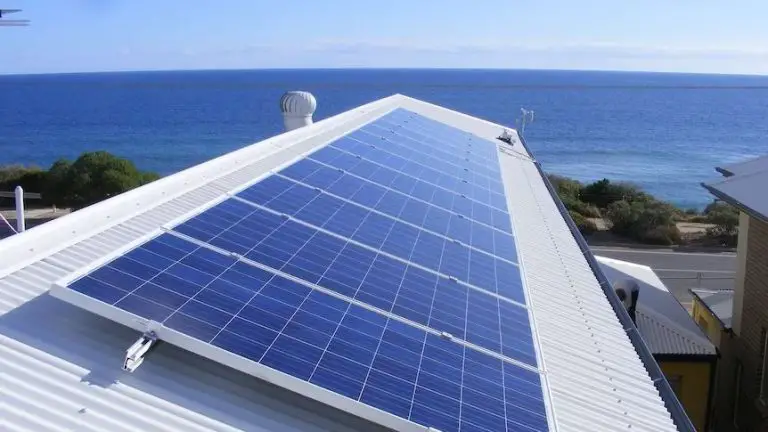Which State Is Largest Producer Of Solar Energy In India?
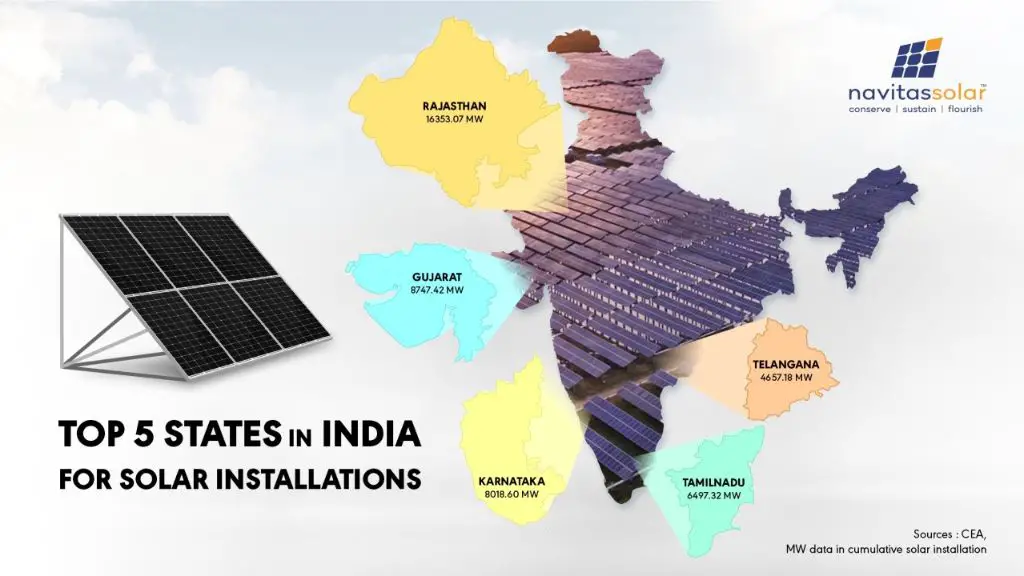
Renewable energy sources like solar are becoming increasingly important in India. With a growing population and rising energy demand, India faces challenges in meeting its energy needs in a sustainable manner. Solar energy is a clean, inexhaustible resource that has significant potential to help meet India’s energy security and climate change goals. India has set ambitious targets for solar energy and is rapidly expanding its solar generation capacity. As of 2021, the installed solar capacity was over 45 gigawatts, and India aims to have 175 gigawatts of renewable energy capacity by 2022 as part of its commitment to reduce carbon emissions (LinkedIn). Given India’s abundant solar resources and policy push, solar power is poised to play a major role in India’s renewable energy transition. Identifying the leading states in solar energy production will provide insights into India’s progress and remaining challenges.
Growth of Solar Energy in India
Solar energy capacity in India has seen tremendous growth over the last decade. According to the Ministry of New and Renewable Energy (MNRE), the installed solar capacity has increased from just 10 MW in 2010 to over 42,000 MW as of November 2021 (https://mnre.gov.in/the-ministry/physical-progress).
The Indian government has set an ambitious target of achieving 175 GW of installed renewable energy capacity by 2022, of which 100 GW is expected to come from solar power. To put this in perspective, the 100 GW solar target is more than the current total solar capacity installed globally.
Some of the key government policies and initiatives that have driven the rapid growth of solar power in India include the Jawaharlal Nehru National Solar Mission launched in 2010, renewable purchase obligations for utilities, net metering policies, solar park schemes, and subsidies and incentives provided by central and state governments.
Significant investments have flowed into the Indian solar power sector from both domestic and international players. According to Mercom India Research, total solar installations in India increased from 3,744 MW in 2015-16 to 10,148 MW in 2019-20. Major capacity additions have come from utility-scale solar parks as well as rooftop solar installations (https://mercomindia.com/solar-installations-2019-2020/).
With supportive policies, declining solar tariffs, and large-scale capacity build-out, India is projected to become one of the leading markets globally for solar energy growth and investments over the coming decade.
Leading States in Solar Energy
India has seen tremendous growth in solar energy production in recent years. Several states have emerged as leaders in solar power generation. Here are some of the top solar energy producing states in India:
Rajasthan is the leading state with over 17 GW of installed solar capacity as of 2022. The state has India’s largest solar park – the Bhadla Solar Park spread over 10,000 hectares. Rajasthan benefits from vast expanses of arid land ideal for solar farms. The state aims to have 30 GW of solar capacity by 2025 (Source).
Gujarat is second with over 10 GW of installed solar capacity. The state was an early pioneer in solar energy. It hosts India’s first solar park, the Charanka Solar Park, as well as the 750 MW Rewa Solar Park. Gujarat has seen investments from major players like Adani, Azure Power, and Softbank (Source).
Karnataka has emerged as a major solar state with over 9 GW of installed capacity. The state benefits from strong solar irradiation and has attracted investments from global companies. Major solar parks in Karnataka include Pavagada Solar Park and Koppal Solar Park (Source).
Rajasthan
Rajasthan has emerged as a leading state in India for solar energy production. The state has high solar irradiation and vast tracts of unused dry arid land, making it ideal for large-scale solar projects. Rajasthan is home to the world’s largest Fresnel type 125 MW CSP plant at the Dhirubhai Ambani Solar Park.
Some key solar parks and projects in Rajasthan include:
- Bhadla Solar Park – has an installed capacity of 2,255 MW, spread over 10,000 acres
- Pavagada Solar Park – with 2,050 MW capacity, spread over 13,000 acres
- Rewa Solar Park – 750 MW capacity, spread over 1,500 acres
Major companies involved in developing solar projects in Rajasthan include Adani, Renew Power, Azure Power and state-owned Rajasthan Renewable Energy Corporation.
Gujarat
Gujarat has emerged as a leader in solar energy production in India due to its optimal solar irradiation and supportive policies from the state government. With India’s largest solar park in Kutch district and over 5 gigawatts of installed solar capacity, Gujarat accounts for over 20% of India’s total solar power generation capacity.
The state has set up Asia’s first solar park at Charanka in the Kutch district spread over 5,384 hectares with 500 MW installed capacity and plans to scale it up to 5 GW (source). Major companies involved in developing solar parks in Gujarat include Torrent Power, Adani Renewables, Azure Power, and Softbank Energy.
Gujarat Urja Vikas Nigam Ltd. (GUVNL) has signed Power Purchase Agreements (PPAs) for over 3,000 MW of solar power with developers like Adani Green Energy, Azure Power, ReNew Power etc. The state provides incentives like exemption from electricity duty and rebates on power charges for solar projects (source).
Madhya Pradesh
With its high solar irradiance and large amounts of unused land, Madhya Pradesh has emerged as a leading state for solar energy production in India. According to the MPNRED, the state receives about 5.5 – 6.0 kWh/m2/day of solar radiation, with around 300 sunny days per year.
As of January 2022, Madhya Pradesh had over 5,780 MW of installed solar capacity, the third highest of any state after Rajasthan and Karnataka.[1] Major solar parks in the state include the Rewa Solar Park with 750 MW capacity, Neemuch Solar Park with 500 MW, and Mandsaur Solar Park with 250 MW.
Some key companies involved in solar projects in Madhya Pradesh include [2]:
- Adani Green Energy Ltd – Developing a 600 MW solar project
- Azure Power – Commissioned a 100 MW solar project in Agar district
- Vikram Solar – Supplied modules for Rewa Solar Park
The state government aims to have 10,000 MW of solar capacity by 2022 under its solar energy policy. With strong irradiation, availability of land, and supporting policies, Madhya Pradesh is expected to continue as a solar leader.
Andhra Pradesh
Andhra Pradesh has emerged as a leading solar power producer in India due to its high solar insolation and large barren lands in the state. The state has a solar power potential of 121 GW and a installed solar capacity of over 3 GW as of early 2020.
Some of the major solar parks in Andhra Pradesh include the Ananthapuramu Ultra Mega Solar Park spread over 15,000 acres with a capacity of 1500 MW and the Kurnool Ultra Mega Solar Park built across 4597 acres with a capacity of 1000 MW. These parks have attracted investments from major companies like Softbank, SB Energy and Ayana Renewable.
The state has signed PPAs for over 6000 MW of upcoming solar projects. Major developers involved in solar projects in the state include Adani, ReNew Power, Shapoorji and Tata Power. The state government provides various incentives to boost solar power adoption such as waiver of inter-state transmission charges, reimbursement of SGST and promptpayment of subsidies.
Karnataka
Karnataka has emerged as a leading state for solar energy production in India. According to a study by the International Journal of Creative Research Thoughts (IJCRT), Karnataka has the potential to generate up to 25 GW of solar energy, owing to 300+ days of sunshine per year and vast tracts of semi-arid wasteland ideal for building solar parks (https://ijcrt.org/papers/IJCRT2312738.pdf).
Some of the major solar parks in Karnataka include the 2 GW Pavagada Solar Park, spread over 13,000 acres, and the Shakti Sthala Solar Park with a capacity of 2 GW. The state also has several other solar parks under development like the Koppal Solar Park (700 MW) and Ballari Solar Park (1,200 MW) (https://ijcrt.org/papers/IJCRT2312738.pdf).
Key companies involved in solar projects in Karnataka include Adani Green Energy, Tata Power, Renew Power, and Azure Power. Major investments have come from entities like the World Bank, KFW, ADB, and NIIF (https://ijcrt.org/papers/IJCRT2312738.pdf). The state government has also unveiled attractive policies to boost solar capacity and energy storage solutions.
Challenges for Solar Energy
India faces several key challenges in scaling up solar energy production and integration into the electrical grid. Land acquisition has proven difficult due to competing uses for land as well as administrative issues in acquiring and transferring land titles (https://www.linkedin.com/pulse/what-main-challenges-opportunities-indian-solar-singh-yks-/). Large-scale solar projects require significant land area with optimal sun exposure and proximity to transmission infrastructure. With other demands on land for agriculture, residential use, and industry, available lands may not align well with solar project siting needs.
Integrating solar power into the electrical grid also poses technical challenges. Solar generation varies throughout the day and seasons, so grid operators must balance this fluctuating supply with other generation sources. Upgrades to transmission infrastructure are needed in areas with high concentrations of solar farms to handle power flows (https://www.eai.in/ref/ae/sol/cs/spi/kc/key_challenges_in_the_growth_of_solar_pv_technology_in_india.html).
Cost competitiveness of solar compared to coal and other power sources has also been a barrier. However, costs have declined dramatically, and solar is now cheaper than coal in many cases. But further cost reductions through research, manufacturing improvements, and scale will be important for continued growth (https://enphase.com/en-in/blog/homeowners/solar-experience/indias-solar-energy-sector-challenges-opportunities-and-way/).
Conclusion
As noted in earlier sections, Rajasthan is currently the largest producer of solar energy in India. The state accounts for almost 25% of the country’s solar energy capacity, thanks to abundant land availability and high solar irradiance. With over 7,500 MW of solar power generation capacity, Rajasthan is significantly ahead of other leading solar states like Gujarat, Madhya Pradesh, Andhra Pradesh, and Karnataka.
The future outlook for solar energy in India is quite positive. The government aims to achieve 100 GW of solar capacity by 2022 as part of the country’s renewable energy goals. To meet this target, solar energy generation will need to grow rapidly not just in Rajasthan but across all states. Rajasthan is expected to maintain its dominance, given its natural advantage and proactive policies. But other states are also ramping up solar parks and facilities and could emerge as major contributors. Overall, solar power is poised to become a vital part of India’s renewable energy mix and reduce the dependence on fossil fuels.

